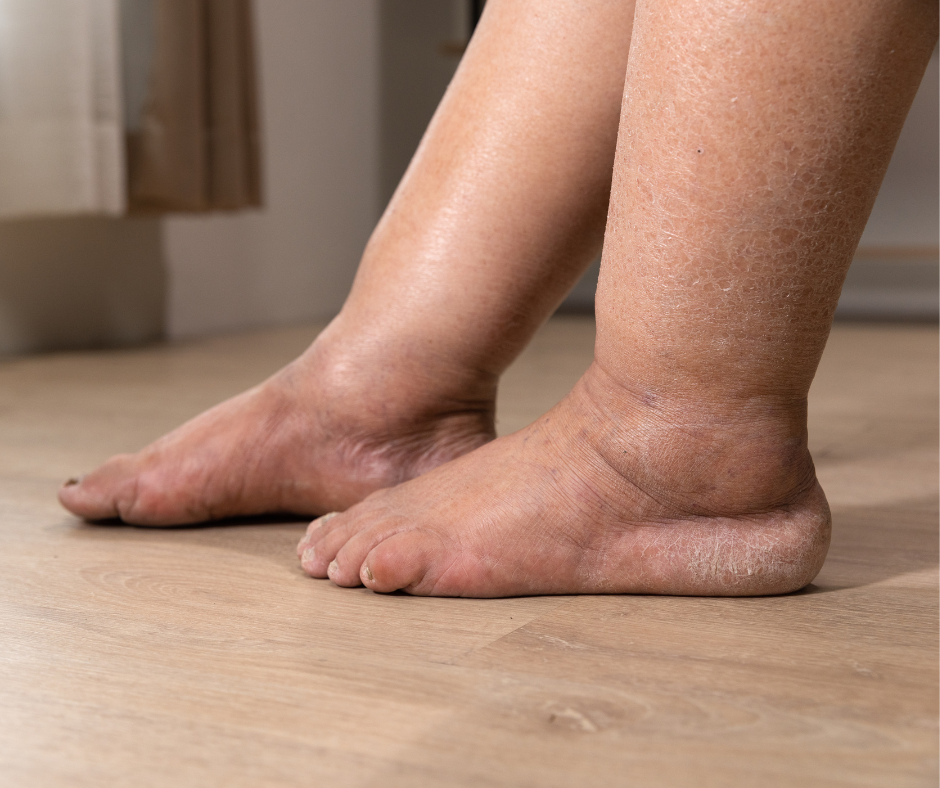There can be a lot of confusion regarding swelling in the body. Is it edema? Is it lipedema? Or is it lymphedema? Sometimes it can be difficult to differentiate but keep scrolling to learn about our first topic in this 3 part series: EDEMA.
Edema is excess fluid in the body. If you’ve ever sprained your ankle or had some trauma to your tissues, be it from a fall while trying to stop a home run in your weekly softball league or simply running into the corner of your desk at home (because how many of us does that happen to regularly?) and suddenly the area is swollen, it’s likely edema.

There are four different grades to the pitting that edema causes:
- Grade 1 (2mm deep)
- Grade 2 (3-4mm deep)
- Grade 3 (5-6mm deep)
- Grade 4 (8mm deep)
In addition to some injuries, edema can also be attributed to things like:
- Gravity. How often have you stepped off a long flight only to have swollen ankles, or you’ve been on your feet all day at work, and they feel like someone injected lead into them?
- Pregnancy. I’ve seen so many women over the years with such swollen arms and legs that they can’t wear shoes comfortably and haven’t put their rings on for months.
- Side effects from medications.
- Poor nutrition. While it’s perfectly acceptable to have sodium in your diet, eating a lot of highly processed foods with so much garbage can cause a buildup of fluid in your body.
- Underlying health conditions, including heart failure, lung, liver, and kidney diseases.
- An after-effect of surgery.
Thankfully, edema is a condition that is generally managed with things like the elevation of extremities; such, after the end of a long day on your feet, try the legs up the wall stretch, which is precisely what it sounds like—laying on your back on the floor and bringing your legs up the wall. Doing this will allow the fluid that has been pooling at your feet to move back up the legs (or down in this position). Staying hydrated may seem contradictory-why would you be taking in more fluid if you’re trying to get rid of it? But think of it as flushing your system out. Get some movement that will help kick your lymphatic system into gear and move things quicker. Or let the Michigan Massage and Wellness pros deliver a proper Manual Lymphatic Drainage session. Trust me. It’s always better when someone else is doing the work!
In Good Hands,
Rebecca Tamm, LMT, MLD-C